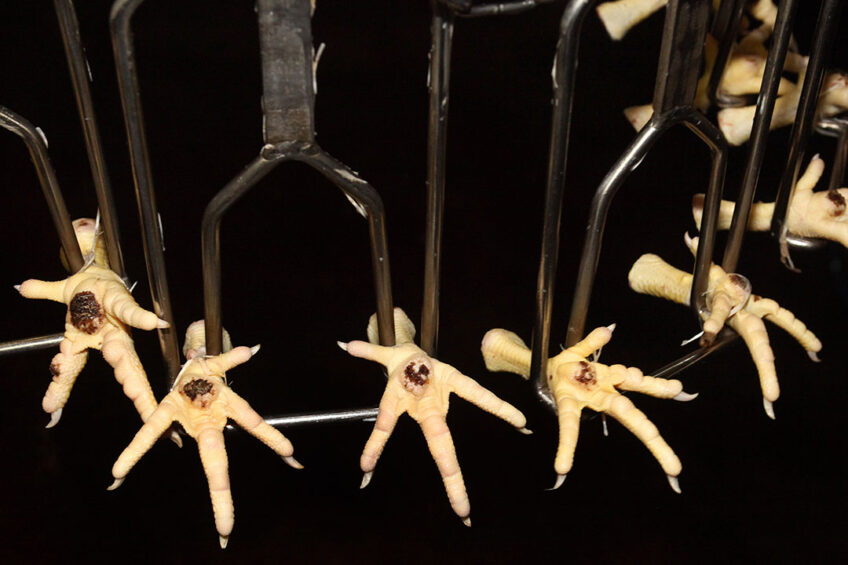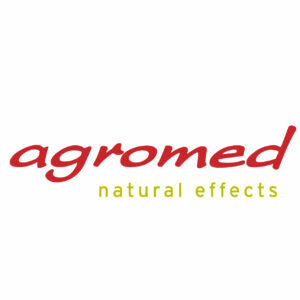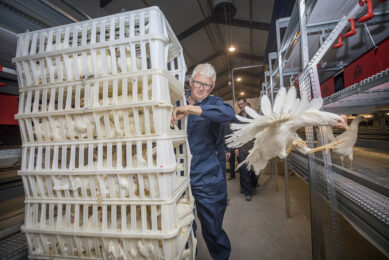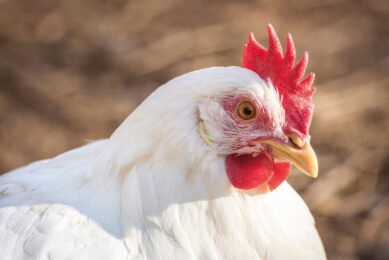Animal welfare in the product development process

The term ‘animal welfare’ is mostly associated with the health, quality of life and well-being of farm animals. The focus in this context is on things like heat stress, housing and rearing conditions, adequate nutrition or footpad dermatitis. Sound research models bring solutions on farm and – at the same time – limit adverse effects on animal welfare during the product development process.
One of the main goals of nutritionists nowadays is to develop feed additives which can also help to combat some welfare issues. However, to investigate whether these products are really effective they need to be directly tested on farm animals, which is another aspect of welfare. Considering the ever-growing importance of animal welfare, also from a consumer point of view, the question is: are there suitable alternatives available to be able to reduce the number of animal trials?
Footpad dermatitis
A product development process starts with an intensive literature search to identify ingredients which could benefit animal performance. Animal performance, however, is always linked to animal welfare. If an animal is not feeling well, its performance will be impaired. One of the simplest and easiest ways to gain an impression of the level of animal welfare is the presence of footpad dermatitis.
Footpad dermatitis is an inflammatory skin condition affecting the foot pads. Depending on the severity – caused by the destruction of the upper layer of skin and the formation of ulcers – it tends to occur more often in fattening poultry. An animal that experiences pain when standing will be reluctant to move to the feeder and will not eat. Therefore, footpad dermatitis is of utmost importance not only from an animal welfare point of view, but also has a major economic impact due to a reduced live weight, leg and meat yield and increased carcass condemnations. Considering that the chicken paw market alone amounts to hundreds of millions of dollars in revenue, these condemnations have a huge economic impact.
Wood lignans may be a solution
The main determinant of footpad dermatitis is exposure to wet litter. Studies have shown that diets supplemented with wood lignans can reduce wet litter, also when compared to animals receiving diets containing antibiotics (Table 1). This was associated with a lower incidence of footpad dermatitis. The footpad lesion scoring of 20 broilers per treatment showed that feeding wood lignans to broilers totally eliminated the incidence of footpad dermatitis, while slight signs of footpad dermatitis were prevalent even in birds fed antibiotics.
Risks of animal trials
Ethical guidelines apply when animal trials are designed to safeguard animal welfare. However, even after a thorough literature search as a first step, in the product development process and in vitro screening of the possible new product in a second step, there is still a risk that animal welfare could be negatively impacted during an animal trial.
In the footpad dermatitis cases described, the impact on animal welfare is mild. Nevertheless, the times are gone when customers were willing to buy a ‘black box’ as long as the promoted product offers any benefit to the profitability of the farm. Nowadays, when it comes to products affecting performance, or the health or well-being of farm animals, highly educated nutritionists and well-trained farm managers demand insight into the mode of action, backed by scientific data. Running trials which look at the mode of action in more depth would have a far more severe impact on animal welfare than as indicated by looking only at parameters such as footpad dermatitis. But how can that impact be minimised?
Minimising the impact of product development
A recent publication on the mode of action of wood lignan-derived feed additives impressively illustrates how different in vitro and in vivo methods can be successfully blended to keep the use of farm animals to a minimum. The research aimed to test the cytoprotective potential of feed additives, rich in specially selected bioactive plant metabolites derived from the bark of certain tree species.
Besides data on gene expression levels obtained from cultures of different cell lines to evaluate the anti-inflammatory effects and anti-oxidative potential of the tested additive, an ‘alternative’ in vivo model was established at the Austrian Competence Center for Feed and Food Quality, Safety and Innovation (FFoQSI) to test the influence of the supplement on gut integrity in a functioning organism without the need to stress a farm animal.
Although the model system of the fruit fly Drosophila melanogaster is well established, its use in the feed supplement business is rather novel. In a ‘smurf fly assay’, individuals of D. melanogaster were challenged with a chemical stressor eliciting a leaky gut syndrome in the flies’ intestinal tract. When the flies are fed a diet with a blue colour, the colour molecules permeate through the leaky intestinal wall in the haemolymph and thus to all body compartments giving the fly a blueish smurf-like appearance.
Where the gut integrity of these flies is strengthened due to the influence of wood-derived feed supplements, they cannot be distinguished from healthy, unchallenged flies. Consequently, if the supplementation of a feed additive reduces the share of ‘smurf flies’ in a population, this may be interpreted as having the potential to strengthen the gut barrier in living animals.
Findings from these in vitro and ‘alternative’ in vivo models gives a first impression of the mode of action of products. As a result, a product formulation can be adapted and easily re-evaluated non-invasively using such alternative methods, before being tested on farm animals under both controlled and field conditions only as a final step. Thus keeping the impact of the product development process on farm animals to a minimum.
Join 31,000+ subscribers
Subscribe to our newsletter to stay updated about all the need-to-know content in the poultry sector, three times a week. Beheer
Beheer



 WP Admin
WP Admin  Bewerk bericht
Bewerk bericht